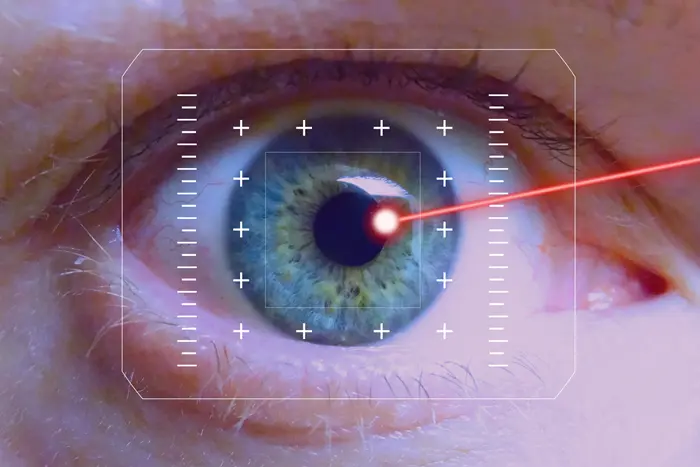Laser eye surgery, commonly known as LASIK (Laser-Assisted In Situ Keratomileusis), has transformed vision correction by offering a safe and effective alternative to glasses and contact lenses. This article explores the success rate of laser eye surgery, examining various factors that contribute to its outcomes, potential risks, and advancements in the field.
Understanding Laser Eye Surgery
What Is LASIK?
LASIK is a type of refractive surgery aimed at correcting vision problems such as myopia (nearsightedness), hyperopia (farsightedness), and astigmatism. The procedure involves reshaping the cornea using a laser to allow light entering the eye to be properly focused onto the retina, resulting in clearer vision.
The Procedure
The LASIK procedure typically involves the following steps:
Preparation: The patient is given numbing eye drops to ensure comfort during the surgery.
Corneal Flap Creation: A thin flap is created on the cornea using a microkeratome or a femtosecond laser.
Reshaping the Cornea: An excimer laser is used to remove precise amounts of corneal tissue, reshaping the cornea to correct the refractive error.
Flap Repositioning: The corneal flap is repositioned, acting as a natural bandage as it adheres without the need for stitches.
See Also: What Problems May Occur During Laser Eye Surgery?
Success Rates of LASIK
Defining Success
Success in LASIK surgery is often measured by the improvement in visual acuity, the achievement of 20/20 vision or better, and patient satisfaction. It also considers the reduction or elimination of dependence on glasses or contact lenses.
Statistical Success Rates
Studies and clinical trials have consistently shown high success rates for LASIK surgery:
Visual Acuity: According to the American Society of Cataract and Refractive Surgery (ASCRS), over 90% of LASIK patients achieve 20/20 vision or better post-surgery.
Patient Satisfaction: Reports indicate a patient satisfaction rate of over 95%, with many expressing a significant improvement in quality of life.
Long-term Results: Research shows that the majority of LASIK patients maintain their improved vision for many years post-surgery, with minimal regression.
Factors Influencing Success Rates
Patient Selection
The success of LASIK greatly depends on careful patient selection. Ideal candidates typically have:
Stable vision prescription for at least a year
No significant eye diseases (e.g., glaucoma, cataracts)
Adequate corneal thickness
Realistic expectations regarding outcomes
Surgeon Experience
The skill and experience of the surgeon performing the procedure play a crucial role in the success of LASIK. Experienced surgeons are better equipped to handle complications and tailor the surgery to the patient’s specific needs.
Technology and Equipment
Advancements in laser technology and surgical equipment have significantly improved the precision and safety of LASIK:
Wavefront-guided LASIK: This technology creates a detailed map of the eye’s unique imperfections, allowing for more precise corrections.
Femtosecond Lasers: These lasers provide greater accuracy in creating the corneal flap, reducing the risk of complications.
Potential Risks and Complications
Common Side Effects
While LASIK is generally safe, some patients may experience temporary side effects, including:
Dry eyes
Glare or halos around lights
Fluctuating vision
Light sensitivity
Rare Complications
Serious complications are rare but can include:
Infection
Corneal flap issues
Under-correction or over-correction of vision
Regression of vision improvement over time
Advancements in Laser Eye Surgery
SMILE (Small Incision Lenticule Extraction)
SMILE is a newer refractive surgery technique that involves creating a small incision in the cornea to remove a lenticule (a small piece of corneal tissue). It offers similar outcomes to LASIK with potentially fewer side effects, such as dry eyes.
PRK (Photorefractive Keratectomy)
PRK is another alternative to LASIK, where the corneal epithelium is removed before reshaping the cornea with a laser. It is often recommended for patients with thin corneas or those with certain corneal irregularities.
Long-term Success and Patient Outcomes
Longevity of Results
Many patients enjoy the benefits of LASIK for several years. Studies have shown that the majority of patients maintain 20/20 vision or better for up to 10 years post-surgery. However, natural changes in vision due to aging, such as presbyopia, may eventually necessitate the use of reading glasses.
Enhancements and Retreatment
In some cases, a follow-up procedure, known as an enhancement, may be needed to fine-tune vision correction. Enhancements are typically minor and less invasive than the initial surgery.
Patient Testimonials and Case Studies
Positive Experiences
Numerous patient testimonials highlight the life-changing impact of LASIK surgery. Many report a newfound freedom from glasses and contact lenses, enhanced self-confidence, and improved daily functioning.
Case Studies
Case studies provide valuable insights into the diverse outcomes of LASIK surgery. For instance, a study of military personnel undergoing LASIK showed high success rates and minimal complications, demonstrating the procedure’s effectiveness in demanding environments.
Conclusion
Laser eye surgery, particularly LASIK, boasts a high success rate and patient satisfaction. While it is not without risks, advancements in technology and careful patient selection have significantly minimized complications. For those considering LASIK, consulting with an experienced surgeon to determine candidacy and understand potential outcomes is crucial. As the field continues to evolve, the future of laser eye surgery promises even greater precision, safety, and success.

